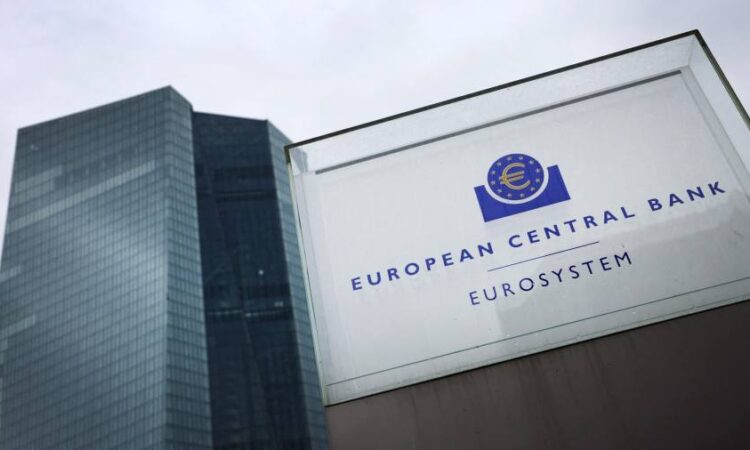
Receive free European Central Bank updates
We’ll send you a myFT Daily Digest email rounding up the latest European Central Bank news every morning.
The European Central Bank’s press conferences affect financial markets more than those of the US Federal Reserve, according to an index the Frankfurt institution has created to measure the tone of its communication.
The ability to guide investors’ expectations in the desired direction is a vital policy tool for a central bank, so the findings of the ECB’s communication tracking index is likely to attract interest from policymakers and market participants alike.
The ECB announced the feature in a blog by staff members on Wednesday, saying its press conferences had “affected markets beyond the immediate impact of policy decisions” when measured against movements in one-year overnight indexed swap rates.
“What central banks say can influence prices on financial markets and, ultimately, how the economy evolves,” the ECB staff said. It found the eight press conferences following the start of its rate rises in July 2022 had mostly moved markets in the desired direction.

The results were different for the Fed. “In contrast, there has been no consistent co-movement between our measure of changes in the Fed’s policy tone and short-term rates during the Federal Reserve chair’s post-meeting press conferences,” it said.
The Fed declined to comment. But the ECB offered a potential explanation, saying markets may respond to “other sources of information not directly captured by the press conference”, such as the “dot plot” table of interest rate forecasts by Fed officials that it updates after each policy meeting.
The ECB staff said the index also tracked the tone of speeches, interviews and testimonies before lawmakers by central bank officials, assessing whether they were “hawkish” — signalling a likely tightening policy bias — or “dovish” — signalling a loosening bias.
Since the ECB started raising rates in July 2022, the index found swap rates had twice moved in the opposite direction to that signalled by the tone of its press conferences.
After its first rate rise in July 2022, swap rates moved up even though its press conference was considered dovish. In February this year, its communication was measured as hawkish and yet swap rates moved down.
The ECB blog said the reason for the March discrepancy may have been the governing council’s statement that “risks to the outlook have also become more balanced” and that it would “evaluate the subsequent path of our monetary policy” at the next policy meeting.
“These statements may have led markets to expect that the pace of rate hikes would slow down after March,” the blog said. “Overall, this evidence highlights the importance of central banks’ policy tone in communicating not only factual information, but also guiding the public’s assessment of the monetary policy reaction function.”
“In 2021 and 2022, Fed communication was on average more hawkish than that of the ECB,” it said. “This difference in tone has, however, shrunk recently as the ECB has also become progressively more hawkish in tone.”
It found that differences in tone between the ECB and Fed “help to explain changes in the euro/dollar exchange rate” and that communications between policy meetings “can also affect financial markets”.
The Fed started raising rates four months before the ECB and has raised them by 5.25 percentage points since last March. The ECB has raised its deposit rate by 4.25 percentage points. Although inflation remains above their 2 per cent targets, investors are betting they are both close to stopping.





